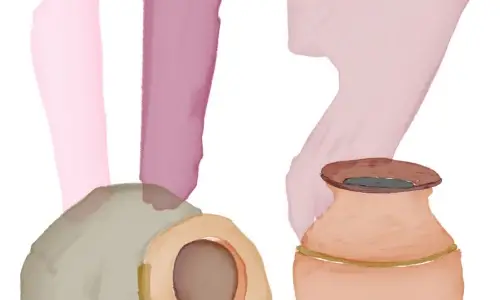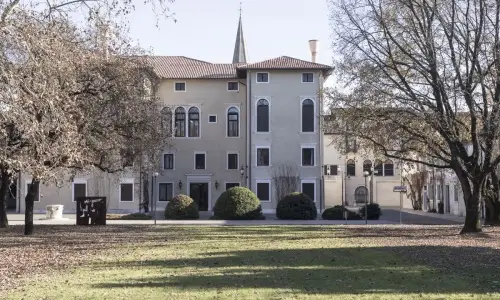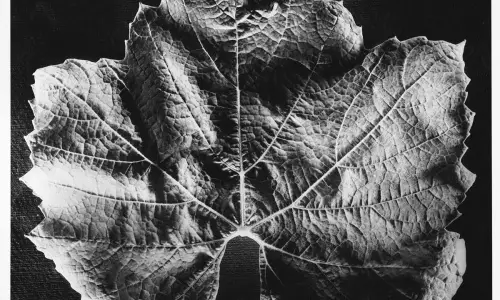Heritage
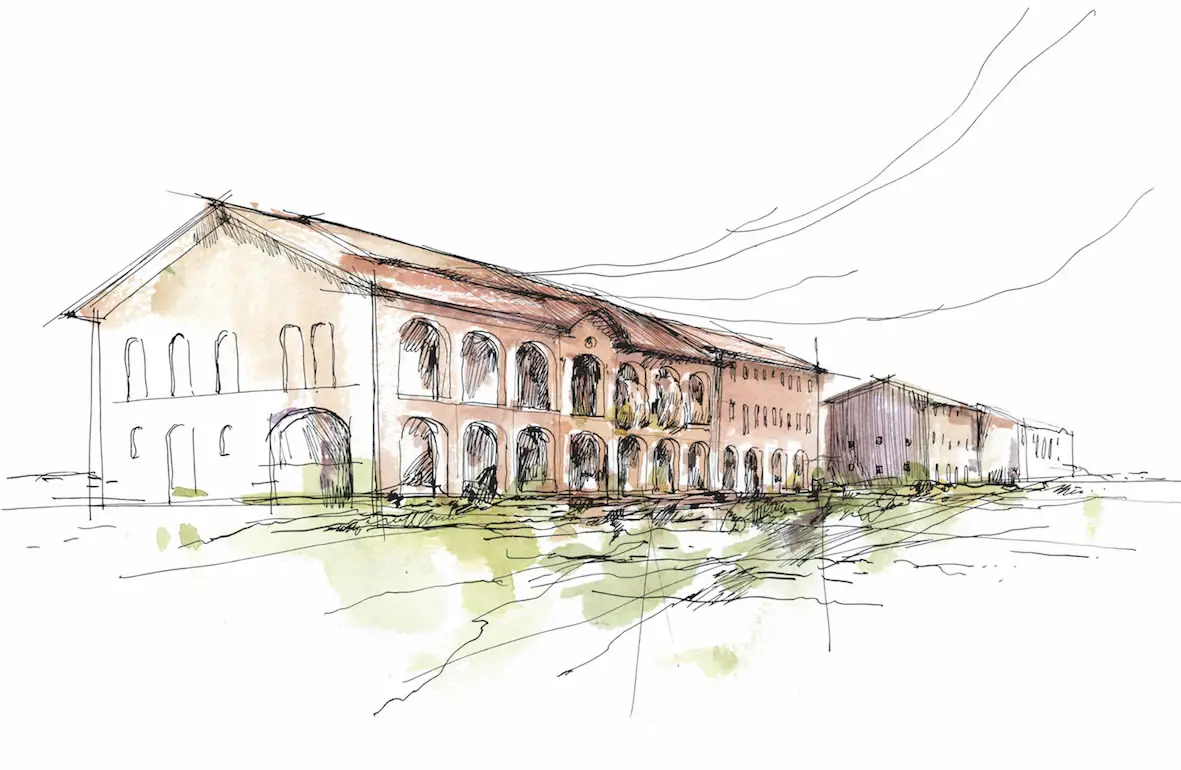
- Heritage
- Hits: 2722
Utopia made real
 Long and narrow roads that cut through farmlands, a low skyline blurred by the fog, old farmhouses scattered on the land; this is the landscape you see as you travel from Venice to Portogruaro. Venice is at once close and distant from here. The cultural splendor of the city reaches these lands, but this is a territory with its own specific characteristics, a land of products and of production that for centuries has been La Serenissima's larder. The agro-industrial complex of Villanova Santa Margherita and Torresella are located respectively to the east and south-east of Portogruaro, if you are driving down the SS14. It is a "new" development, uniquely shaped like few other Italian realities by an industrial and dynastic history, that of the Marzotto's and their ideas about work and society.
Long and narrow roads that cut through farmlands, a low skyline blurred by the fog, old farmhouses scattered on the land; this is the landscape you see as you travel from Venice to Portogruaro. Venice is at once close and distant from here. The cultural splendor of the city reaches these lands, but this is a territory with its own specific characteristics, a land of products and of production that for centuries has been La Serenissima's larder. The agro-industrial complex of Villanova Santa Margherita and Torresella are located respectively to the east and south-east of Portogruaro, if you are driving down the SS14. It is a "new" development, uniquely shaped like few other Italian realities by an industrial and dynastic history, that of the Marzotto's and their ideas about work and society.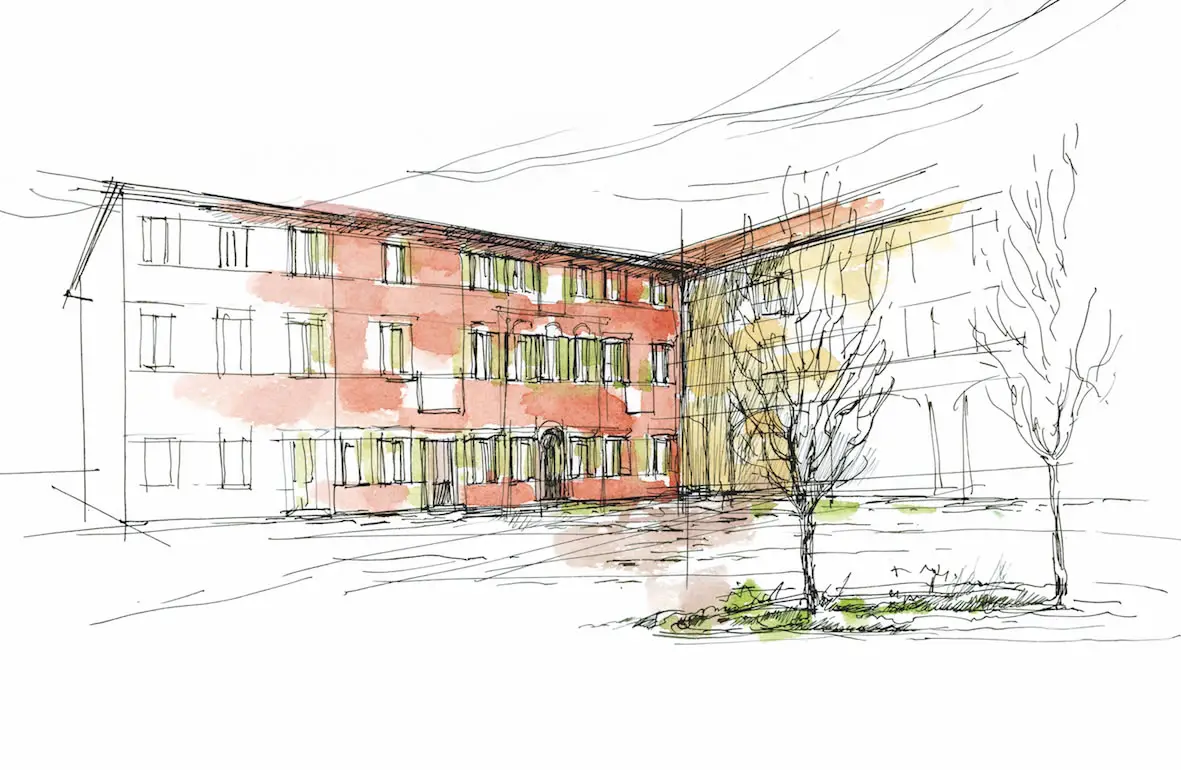 It all began with a farming estate of more than one thousand hectares. The land, acquired by Gaetano Marzotto in 1934, was previously owned by the Stucky family, which had reclaimed the marshy terrain in the 1920s. Marzotto’s plan was to incorporate it into a new agricultural hub with integrated activities and state of the art productive systems, completing the overall reclamation of this wetland area. The model of inspiration was clearly Valdagno (in the province of Vicenza), the place where in 1836 the Marzotto family had established a wool manufacturing company, transforming a cottage industry into a modern enterprise, while at the same time completely rethinking the local architectural and functional layout. Valdagno is the base from which the history of one of Italy's most legendary entrepreneurial families began. The story dates as far back as the eighteenth century with the commerce of wool, leading, about a century later, to the creation of a manufacturing company, under the leadership of Luigi Marzotto, the son of the family's first Gaetano. But it is thanks to Gaetano Jr. that Valdagno’s mills became Italy's greatest industrial success story.
It all began with a farming estate of more than one thousand hectares. The land, acquired by Gaetano Marzotto in 1934, was previously owned by the Stucky family, which had reclaimed the marshy terrain in the 1920s. Marzotto’s plan was to incorporate it into a new agricultural hub with integrated activities and state of the art productive systems, completing the overall reclamation of this wetland area. The model of inspiration was clearly Valdagno (in the province of Vicenza), the place where in 1836 the Marzotto family had established a wool manufacturing company, transforming a cottage industry into a modern enterprise, while at the same time completely rethinking the local architectural and functional layout. Valdagno is the base from which the history of one of Italy's most legendary entrepreneurial families began. The story dates as far back as the eighteenth century with the commerce of wool, leading, about a century later, to the creation of a manufacturing company, under the leadership of Luigi Marzotto, the son of the family's first Gaetano. But it is thanks to Gaetano Jr. that Valdagno’s mills became Italy's greatest industrial success story.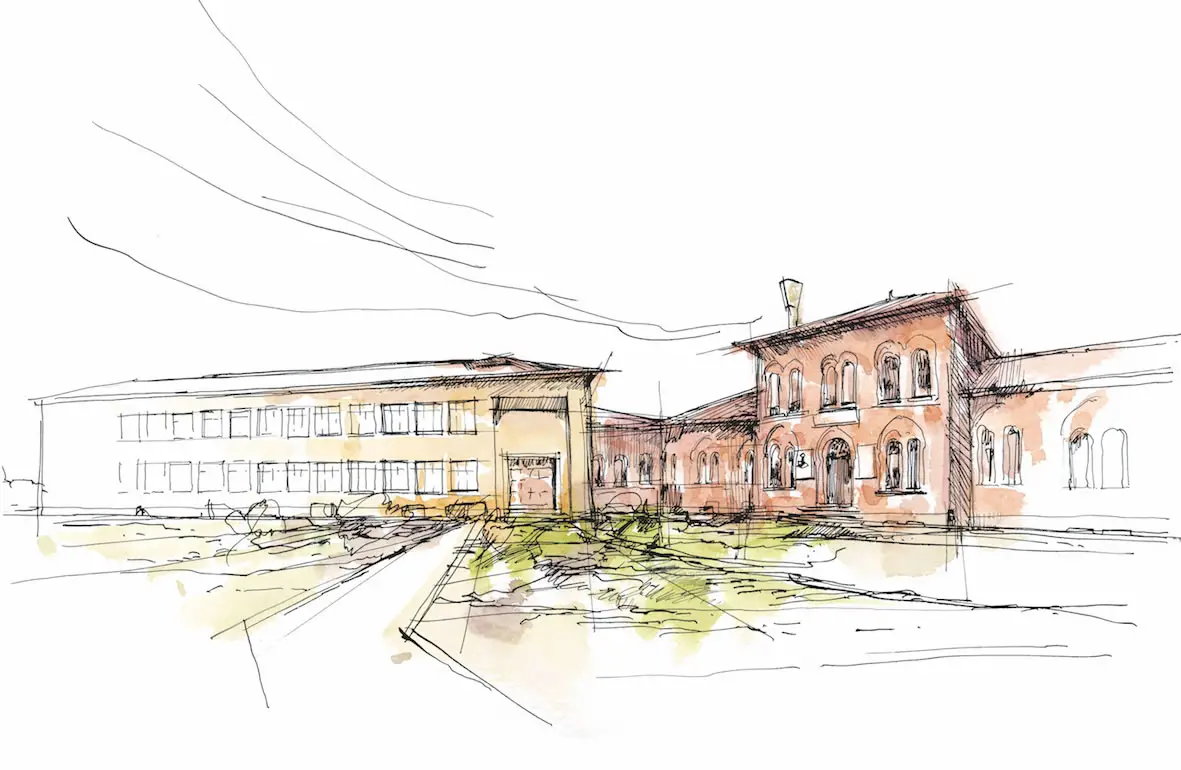 By restoring the machinery and reorganizing labor—a real obsession for Gaetano who was influenced by the new scientific approaches to labor being developed in the United States—he was able to transform the Marzotto factory into Europe's most efficient wool manufacturer. By the second half of the 1930s, the Valdagno factory had become the leading national manufacturing industry and the number one Italian textile exporter worldwide. All this optimization, however, transformed a part of the workforce into surplus (an estimated two thousand redundancies) and it is also for this reason that Gaetano Marzotto began to think of new activities through which to re-employ the Valdagno workers. In the Stucky estate, he saw the perfect opportunity to further develop and diversify the family business. At the time, Villanova was a poorly developed area, divided among small farm lease-holders for whom subsistence farming was the norm. The main crops were maize, beets and potatoes. The heart of the estate was and still is the casa Rossa. It stands today as a benevolent monument to Italy's agricultural and industrial history as well as being the symbolic center of the Marzotto business, situated alongside the cellar where one of Italy's best selling wines is produced. Under Gaetano Marzotto’s leadership, Villanova Santa Margherita grew impetuously from the 1940s onward. Modern machinery for land reclamation and agriculture were introduced. In addition to agricultural production, new livestock systems were implemented (animals had so far only been used to work the land), as well as sugar, glass, and soap factories and a cotton mill. The idea was to create an integrated and synergic system of supply chains. To name just a few examples: the wine would be bottled using the locally produced glass; the soap factory would make use of the waste products from other activities; the sugar factory could provide and outlet for the locally grown beetroot. It is here, that Italy's first industrially made fruit juice was produced. All in all, a total of twelve industrial plants were built.
By restoring the machinery and reorganizing labor—a real obsession for Gaetano who was influenced by the new scientific approaches to labor being developed in the United States—he was able to transform the Marzotto factory into Europe's most efficient wool manufacturer. By the second half of the 1930s, the Valdagno factory had become the leading national manufacturing industry and the number one Italian textile exporter worldwide. All this optimization, however, transformed a part of the workforce into surplus (an estimated two thousand redundancies) and it is also for this reason that Gaetano Marzotto began to think of new activities through which to re-employ the Valdagno workers. In the Stucky estate, he saw the perfect opportunity to further develop and diversify the family business. At the time, Villanova was a poorly developed area, divided among small farm lease-holders for whom subsistence farming was the norm. The main crops were maize, beets and potatoes. The heart of the estate was and still is the casa Rossa. It stands today as a benevolent monument to Italy's agricultural and industrial history as well as being the symbolic center of the Marzotto business, situated alongside the cellar where one of Italy's best selling wines is produced. Under Gaetano Marzotto’s leadership, Villanova Santa Margherita grew impetuously from the 1940s onward. Modern machinery for land reclamation and agriculture were introduced. In addition to agricultural production, new livestock systems were implemented (animals had so far only been used to work the land), as well as sugar, glass, and soap factories and a cotton mill. The idea was to create an integrated and synergic system of supply chains. To name just a few examples: the wine would be bottled using the locally produced glass; the soap factory would make use of the waste products from other activities; the sugar factory could provide and outlet for the locally grown beetroot. It is here, that Italy's first industrially made fruit juice was produced. All in all, a total of twelve industrial plants were built.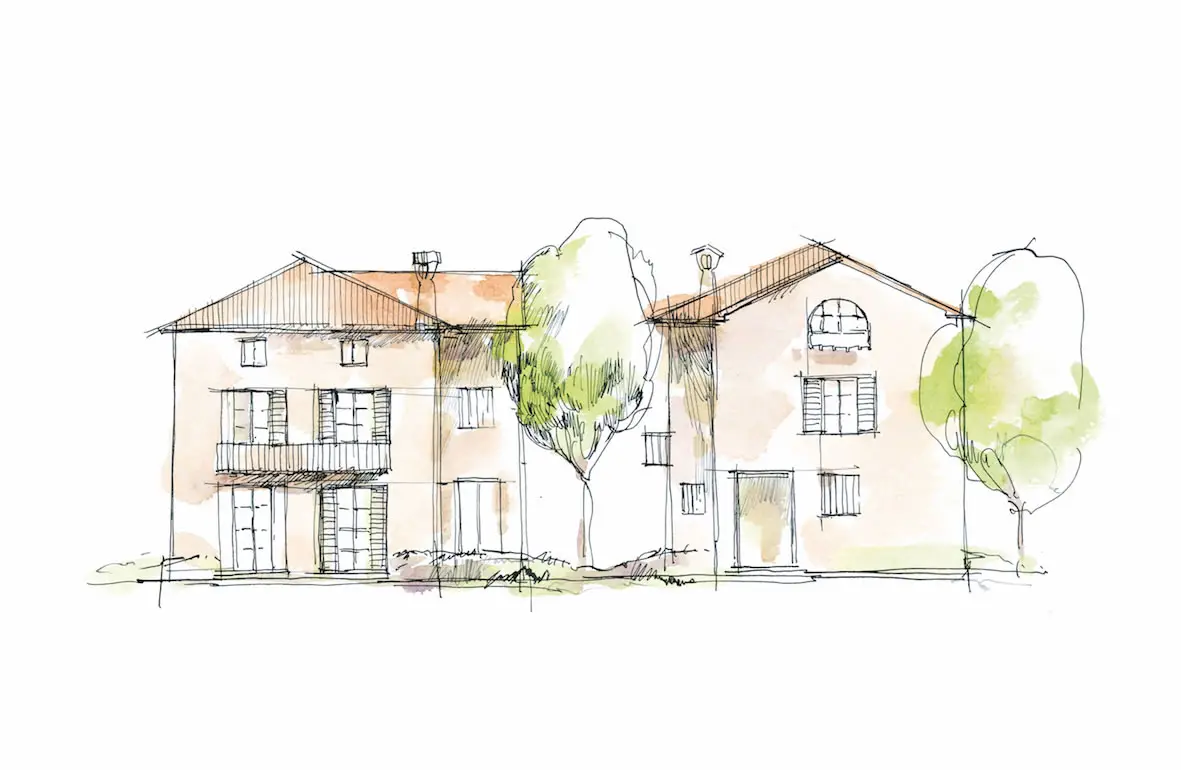 There are beautiful photographs that document the early days of the new settlement. Like pioneers discovering land, the images document machinery loaded onto floats and moved through the shallow waters of the Laguna, tractors plowing the sodden fields. Marzotto’s vision is organized around three principles: human-friendly industrialization, optimized labor management, and social prosperity for all. It is a social and industrial utopia, but it has come true, both here and in Valdagno. An integrated and technologically advanced industrial estate is not enough, Marzotto wants a community, a city built around work. A city made not just of dwellings but of activities and centers where people come together. Thus pre-existing structures are re-qualified and new ones are built from scratch: a kindergarten, a clinic, a company canteen, a nursing home, a hotel with a swimming pool, a sports center, a movie theater. It is an urbanistic and a social experiment. Because it is understood that a company’s success is strongly based on the welfare of its workforce, sure, but also because leaving a mark, a tangible legacy to future generations is an industrialist’s true purpose.
There are beautiful photographs that document the early days of the new settlement. Like pioneers discovering land, the images document machinery loaded onto floats and moved through the shallow waters of the Laguna, tractors plowing the sodden fields. Marzotto’s vision is organized around three principles: human-friendly industrialization, optimized labor management, and social prosperity for all. It is a social and industrial utopia, but it has come true, both here and in Valdagno. An integrated and technologically advanced industrial estate is not enough, Marzotto wants a community, a city built around work. A city made not just of dwellings but of activities and centers where people come together. Thus pre-existing structures are re-qualified and new ones are built from scratch: a kindergarten, a clinic, a company canteen, a nursing home, a hotel with a swimming pool, a sports center, a movie theater. It is an urbanistic and a social experiment. Because it is understood that a company’s success is strongly based on the welfare of its workforce, sure, but also because leaving a mark, a tangible legacy to future generations is an industrialist’s true purpose.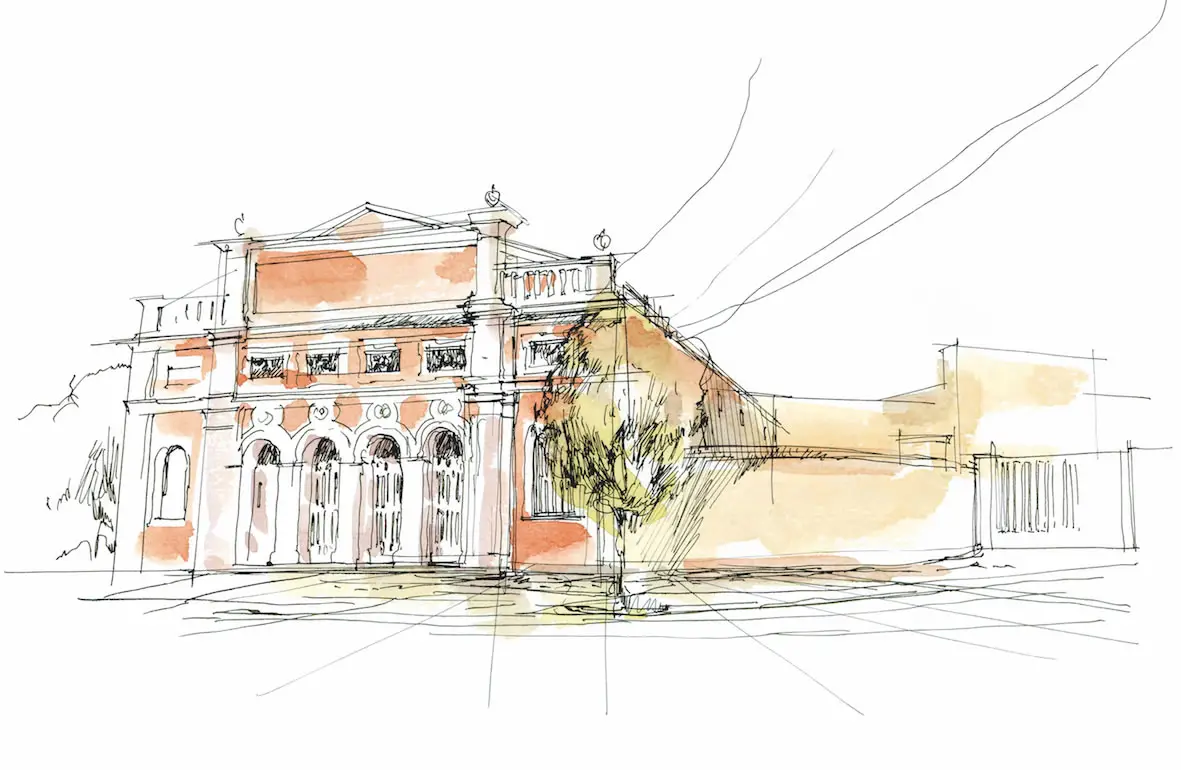
The result is an interesting mix of far-sighted entrepreneurship and a philanthropic spirit. After the war, Gaetano Marzotto was overwhelmed by requests for help and he tried his best to offer solutions: it is one of many examples that sheds light on the intelligence and humanity of this Italian industrialist. The estate became a sort of self-sufficient state within the state. The industrial and agricultural hub ensured the livelihood of its inhabitants, as well as being their only source of income. During this period, the new housing projects were differentiated according to type: detached single family homes for white collar workers, and multi-unit housing with communal gardens for the factory workers. The social activities and community centers brought all social classes together. The kindergarten, for example, was attended by all children, the sons and daughters of farmers, factory and office workers alike. The school fees were proportional to the income of the family, working more as a tax than a fee for a service. In 1949, the “Marzotto Sea Resort” was officially opened in Jesolo, accomodating 1,500 adults and children, for many of whom it was the first taste of a summer vacation by the sea.
The Fifties and Sixties were very interesting times. Influential personalities from a variety of directions visit Portogruaro, from politicians, to foreign observers and intellectuals. From just a few hundred sharecrop farmers in the 1930s, by 1962 the company had 10.000 employees. It is an Italian success story in which know-how, the development of a territory and above all consideration for the welfare of workers, have come together. A place in which people represent the future. The story of Villanova, of Valdagno and of the Marzotto family has started to spread overseas. The origins of the Santa Margherita wine estate are strongly connected with this vision, with this specific idea of a society. It begins with a thousand hectares of wild and poorly farmed land, a land in which the vine is not an important crop, but one of many and it starts to grow and develop in the backdrop an Italy whose consumption habits are changing. Wine is undergoing a transformation from being a mere staple – a quasi-food that for centuries served as a calorie supplement for those that labored the land – to being a product of quality. Gaetano Marzotto was one of the first to perceive this transformation and understand its potential. This is why he decided to focus on wines that can claim a denomination of origin, and why he focused on pursuing technological advancement even in the making of wine. Among the ‘innovations’ of those first pioneering years we find two game-changing introductions: the sparkling vinification of Prosecco, and the off-the-skins vinification (launched in 1961) of Pinot Grigio, the wine which has transformed Santa Margherita into a household name. These are two global products that have conquered important markets and opened up new paths for other successful Italian exports. To walk through Villanova Santa Margherita (named after Gaetano’s wife, Margherita Lampertico Marzotto) today serves as a reminder, it brings us back to a partially lost ambition towards a possible, people-oriented idea of progress. The houses in ordered rows, the grid-like road system, the town center clustering around the main square, the school, the pretty building that used to house the cinema, the omnipresence red of clay-brick – and further out, in progressively larger circles, the factory plants, and then the land, the water, the trees. It feels unusual and special, to see nature coexist alongside the work of man, and to see man not lose his nature.
It begins with a thousand hectares of wild and poorly farmed land, a land in which the vine is not an important crop, but one of many and it starts to grow and develop in the backdrop an Italy whose consumption habits are changing. Wine is undergoing a transformation from being a mere staple – a quasi-food that for centuries served as a calorie supplement for those that labored the land – to being a product of quality. Gaetano Marzotto was one of the first to perceive this transformation and understand its potential. This is why he decided to focus on wines that can claim a denomination of origin, and why he focused on pursuing technological advancement even in the making of wine. Among the ‘innovations’ of those first pioneering years we find two game-changing introductions: the sparkling vinification of Prosecco, and the off-the-skins vinification (launched in 1961) of Pinot Grigio, the wine which has transformed Santa Margherita into a household name. These are two global products that have conquered important markets and opened up new paths for other successful Italian exports. To walk through Villanova Santa Margherita (named after Gaetano’s wife, Margherita Lampertico Marzotto) today serves as a reminder, it brings us back to a partially lost ambition towards a possible, people-oriented idea of progress. The houses in ordered rows, the grid-like road system, the town center clustering around the main square, the school, the pretty building that used to house the cinema, the omnipresence red of clay-brick – and further out, in progressively larger circles, the factory plants, and then the land, the water, the trees. It feels unusual and special, to see nature coexist alongside the work of man, and to see man not lose his nature.
Words – Cristiano De Majo
Illustrations – Karin Kellner
